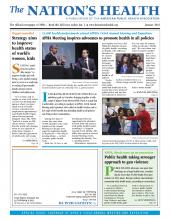A recent study of Americans in opioid treatment programs revealed that adults age 50 to 59 accessed treatment the most in 2012.
The research was published online Nov. 19 in Substance Use and Misuse.
The finding was not surprising given that given baby boomers have higher rates of substance use compared to earlier generations, said Benjamin Han, MD, MPH, lead study author and an instructor at New York University’s School of Medicine. Researchers said the study was important as there is little research on older adults in opioid treatment programs and how it relates to senior health issues.
“Coupled with the unprecedented aging of our population, we are facing a never-before-seen epidemic of older adults with opioid use disorders,” Han told The Nation’s Health.
Researchers looked at trends between 1996 and 2012 across five age groups ranging from age 40 and younger to 70 and older in New York City opioid treatment programs. The most widely used drug during that time period was heroin, the study found. In 1996, over 37,000 city residents were in opioid treatment programs, which spiked to over 40,000 in 2003, the study said. Over 34,000 people received treatment in 2012, the study said.
Adults ages 50 to 59 made up the highest increase in treatment use, with an increase from 7.8 percent of patients in 1996 to nearly 36 percent of patients in 2012, the study found. They surpassed all other age groups in 2012 to be the largest one seeking treatment.
Additionally, patients in all five age groups had an increase in mobility and sight impairment in the same time period. Prevalence of mobility impairment, for example, increased for all ages from 2.3 percent in 1996 to 6.8 percent of patients in 2012.
More research is needed on long-term solutions for adults with substance use issues, Han said. As adults age and become burdened with other chronic diseases and senior health issues, treatment for substance use will only become more complicated, he said.
“We need better models of care that will address chronic conditions and maintain function in this population of highly vulnerable adults,” Han said.
For more information, visit www.tandfonline.com/doi/full/10.3109/10826084.2015.1027929#.Vl3sQngk_pg.
- Copyright The Nation’s Health, American Public Health Association









